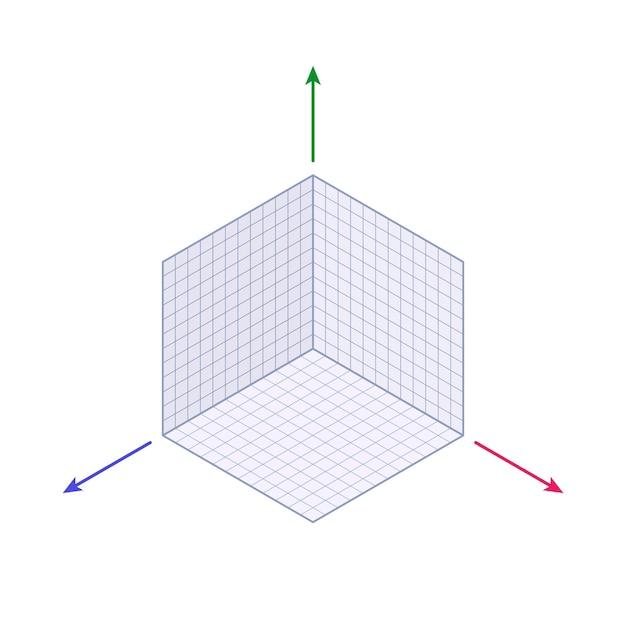In the vast literary landscape, storytelling comes in different forms, offering readers diverse reading experiences. Two widely recognized structures in writing are linear and nonlinear text. Knowing the difference between these two styles can greatly enhance our understanding and appreciation of various literary works.
Linear structure refers to a conventional narrative style in which events unfold in a sequential, cause-and-effect manner. This straightforward approach guides readers along a clear and logical progression, allowing them to easily follow the story from beginning to end. On the other hand, nonlinear structure breaks away from this traditional framework by presenting events in a non-chronological order. These narratives may jump back and forth in time or employ other unconventional techniques to weave multiple storylines together.
Join us as we delve into the intricacies of linear and nonlinear text, explore the reasons behind the emergence of nonlinear storytelling, and discover some captivating examples of both styles in action. Let’s embark on this literary journey to unravel the magic of language, structure, and creativity in English writing.

What is the Difference Between Linear and Nonlinear in English
Understanding the Contrast
Have you ever wondered about the difference between linear and nonlinear when it comes to English? Well, fear not! In this subsection, we will dissect these terms and shed some light on their distinctive qualities. Brace yourself for an enlightening journey through the realms of linguistic linearity!
The Linear Side of Things
Linear, in the context of language, refers to a straightforward, progressive narrative or thought process. It’s like following a path that leads from point A to point B without any detours or distractions. Think of it as the expressway of communication. Linear writing tends to be direct, logical, and organized.
Nonlinear: The Joyride of English
On the other hand, nonlinear language is a bit like going on a wild adventure full of twists, turns, and unexpected surprises. It’s the rollercoaster ride of expression, where thoughts and ideas veer off in unforeseen directions. Nonlinear writing may jump back and forth between different ideas, employ unconventional structures, or mix narratives. It’s the playful side of language that loves to keep you guessing.
Distinguishing Factors
To differentiate between linear and nonlinear writing, let’s explore some key factors:
Structure:
Linear writing adheres to a clear, chronological structure with a logical progression of ideas. It flows like a well-constructed roadmap, taking you from one point to the next in an orderly fashion.
Nonlinear writing, on the other hand, embraces a more unconventional structure. It may employ flashbacks, digressions, or parallel storylines. It surprises and challenges the reader, giving them a unique and unexpected experience.
Creativity:
While linear writing focuses on conveying information in a clear and concise manner, nonlinear writing encourages creativity and experimentation. It allows the writer to play with language, jump between ideas, and explore different narrative styles.
Engagement:
Linear writing aims to deliver information efficiently and coherently, leaving little room for ambiguity. It is like taking a direct flight to your destination.
Nonlinear writing, however, thrives on engagement and interaction. It invites the reader to actively participate, requiring them to connect the dots and make their own interpretations. It’s like taking a scenic road trip with thrilling detours along the way.
So Which One Should You Choose
When it comes to deciding between linear and nonlinear writing, it ultimately depends on your purpose, audience, and the message you want to convey. Both styles have their merits and can be effective in different contexts.
Linear writing works well for conveying clear instructions, presenting facts, or providing a step-by-step guide. It’s reliable and efficient, like a well-oiled machine.
Nonlinear writing, on the other hand, is an excellent choice when you want to captivate your audience, spark their imagination, or challenge their traditional way of thinking. It’s the flamboyant entertainer that keeps everyone on their toes.
Understanding the difference between linear and nonlinear writing in English is like unraveling the mysteries of language itself. Both styles have their unique charms and can be employed in various situations. So, whether you prefer the simplicity of a linear path or the thrill of a nonlinear journey, embrace the beauty of language and let your words flow in their chosen direction. Happy writing!

FAQ: What is the difference between linear and nonlinear in English
In the world of writing, there’s more than one way to tell a story. From linear narratives that follow a chronological sequence to nonlinear texts that jump back and forth in time, understanding the difference between these two styles is crucial for both writers and readers. In this FAQ, we’ll explore the significance of linear and nonlinear text, discover examples of each, and delve into why the English language isn’t always a straight line.
What is the importance of linear and nonlinear text
In a nutshell: Linear and nonlinear text offer different storytelling approaches, each with unique benefits and impacts.
When it comes to linear text, think of it as the straightforward path to storytelling. It presents events in chronological order, from start to finish, with a clear cause-and-effect structure. Linear stories are often used in traditional novels, articles, or simple conversations. They provide a sense of coherence and allow readers to follow a logical progression effortlessly.
On the other hand, nonlinear text takes readers on a whirlwind adventure. It plays with time, shifting between past, present, and future, creating an intricate web of details. This style can enhance suspense, surprise, or even challenge readers to piece together the puzzle. Nonlinear narratives are commonly found in films, books with multiple perspectives, or stories with flashbacks. They offer a fresh perspective and can engage readers in a more interactive and thought-provoking way.
What is linear structure
In a nutshell: Linear structure refers to a storytelling technique where events are presented chronologically.
Imagine you’re telling a friend about your weekend adventures. You start from the moment you woke up on Saturday morning and recount the events in the exact order they happened: the brunch, the hike, the impromptu dance-off. That’s linear structure!
Linear structure allows the story to unfold in a neat and organized manner, much like following a clear roadmap. It helps readers effortlessly follow the story from start to finish, making it a popular choice for many writers.
Why is writing not linear
In a nutshell: Writing isn’t always linear because thoughts and inspiration can strike in mysterious ways.
Have you ever sat down to write a perfect, cohesive story, only to find your thoughts zigzagging all over the place? Don’t worry; you’re not alone. Writing is often a messy, non-linear process.
Our brains are wired to make connections, and sometimes those connections don’t happen in a straight line. Ideas can pop up out of order, jumbled, or even in fragments. As writers, capturing these moments of inspiration is crucial, even if it means jumping back and forth in our writing process. Embrace the chaos, and don’t be afraid to stray from the conventional narrative path!
What are some examples of non-linear plot development
In a nutshell: Non-linear plot development ventures off the beaten path, embracing unconventional storytelling methods.
Imagine watching a film that uses flashbacks, dream sequences, or parallel storylines. These are all examples of non-linear plot development.
One classic example is the Quentin Tarantino film “Pulp Fiction.” The story jumps back and forth in time, with seemingly disconnected events eventually intertwining to form a larger narrative. Another example is the novel “Cloud Atlas” by David Mitchell, which weaves together six different stories spanning centuries. These stories are told non-sequentially but are interconnected thematically.
Non-linear plot development offers writers the freedom to experiment with time and perspective, creating unexpected connections and enhancing the overall impact of the story.
What is an example of non-linear text
In a nutshell: Non-linear text disrupts the traditional flow, allowing readers to engage with the narrative in unconventional ways.
An excellent example of non-linear text is the award-winning novel “Slaughterhouse-Five” by Kurt Vonnegut. It tells the story of Billy Pilgrim, an optometrist who becomes “unstuck” in time. The novel jumps back and forth between different periods of Billy’s life, including his time as a prisoner of war during World War II and his experiences post-war.
By mixing different time periods and incorporating elements of science fiction, Vonnegut challenges traditional storytelling and encourages readers to view time and its impact on human lives from a new perspective. Non-linear text, just like “Slaughterhouse-Five,” invites readers to think critically, question assumptions, and explore alternative realities.
What is the difference between linear and nonlinear in English
In a nutshell: Linear and nonlinear text are like two sides of a linguistic coin, offering distinct ways to convey stories and ideas.
Linear text, as the name suggests, follows a clear path from point A to point B. It progresses logically, step by step, without detours or leaps. Nonlinear text, however, defies expectations, taking readers on a rollercoaster ride through time, perspectives, and narrative threads.
While linear text provides structure and coherence, allowing for easy comprehension, nonlinear text demands active engagement and offers a more immersive reading experience. Both styles have their place and serve different goals, so writers and readers alike can embrace the diversity and richness each brings to the English language.
From linear narratives that guide us from start to finish to non-linear text that challenges our perceptions, the difference between these two approaches is undeniably captivating. By understanding the importance of linear and nonlinear text, embracing non-linearity in our writing process, and exploring examples of both styles, we can become more versatile storytellers and more engaged readers. So, whether you’re taking the scenic route or leaping through time, remember that linear or nonlinear, the beauty of language lies in its divergent paths. Enjoy the journey!
